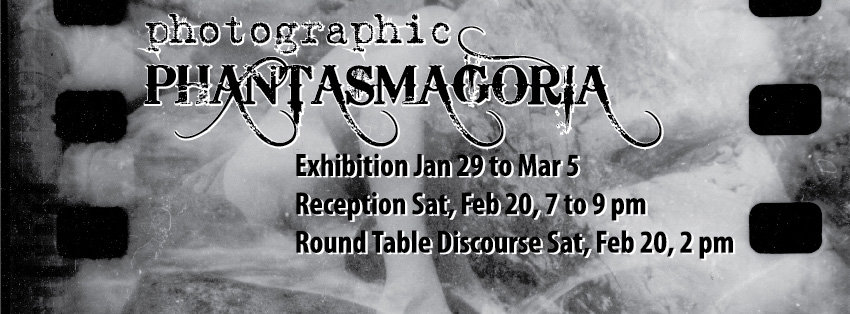
Phantasmagoria was originally the name of a London exhibition in 1802, consisting of optical illusions produced chiefly by magic lantern (image projector). In current use, “phantasmagoria” refers to a sequence of real or imaginary images like those seen in a dream.
In this exhibition we have a variety of unique images produced in many different formats and using many different processes. Some equipment and works by these photographers are assembled so that we can get a glimpse of the photography movement over the years, as well as gaining an understanding of contemporary processes. Photographic Phantasmagoria pulls images from the depths of the proverbial darkroom, from printers connected to ubiquitous cellular phones and from recent innovations in technology – producing objects in three dimensions. You will find images produced using salt, gum arabic, palladium, coffee as well as images produced without cameras (photograms), without lenses (pinhole cameras) and using video technology.
This proclivity we have to create and record has led us to a place in our evolution where not only can we document anything instantly, but we can also change that information instantly. We are able to bend, distort, colour, and shape any image that we produce. And, we can do any or all of this with a push of a button. It will be interesting to observe how these technologies will influence the craft movement in the next few years.
I would like to acknowledge the profound influence Hans Dommasch has had on this community. I would also like to thank all the photographers and collectors that made this exhibition possible, especially Ian Preston.
– Leslie Potter

